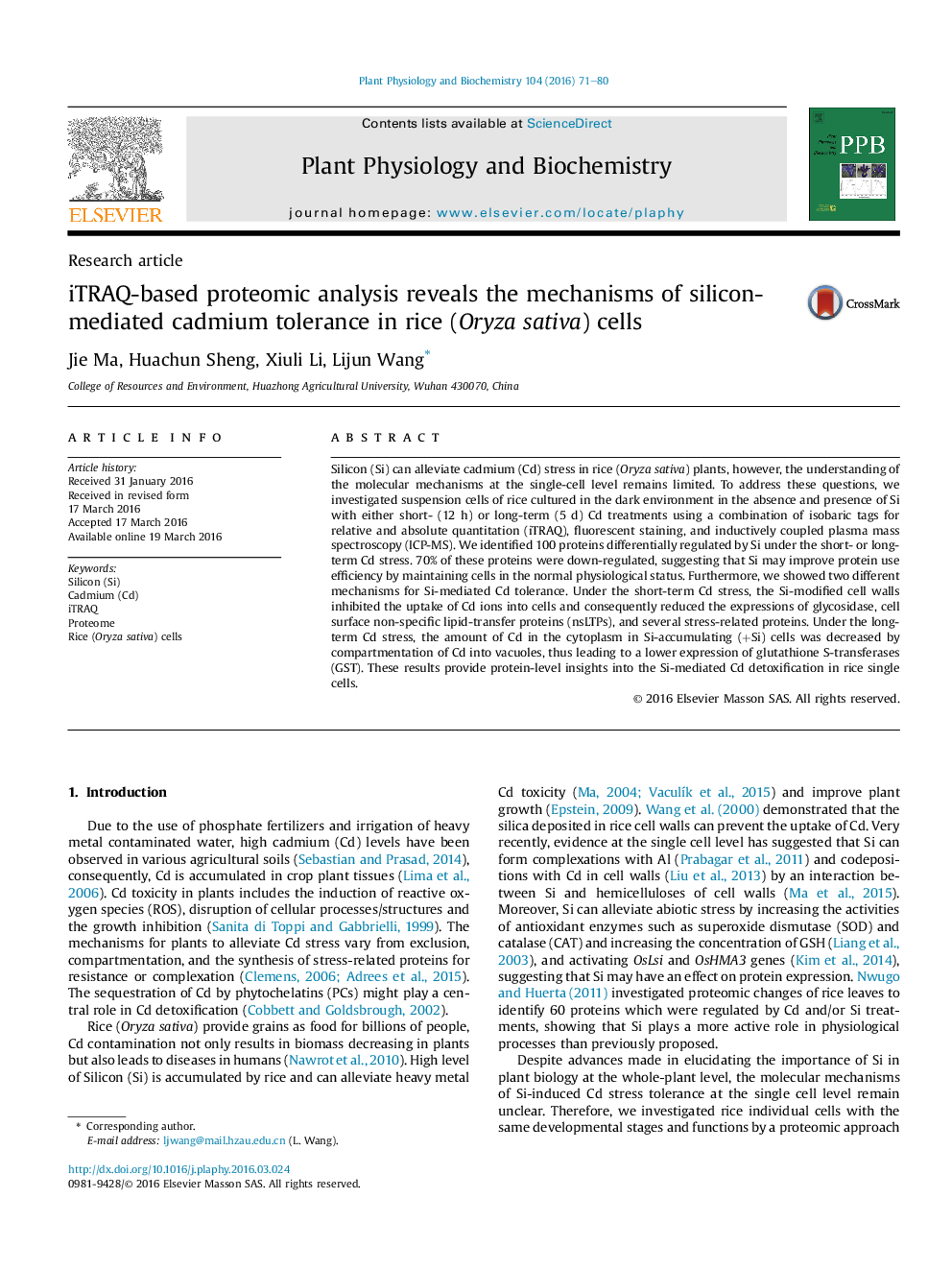| Article ID | Journal | Published Year | Pages | File Type |
|---|---|---|---|---|
| 2014752 | Plant Physiology and Biochemistry | 2016 | 10 Pages |
•iTRAQ revealed 100 proteins differentially regulated by Si under the short- or long-term Cd stress.•Si improved protein use efficiency by maintaining cells in the normal physiological status.•Si-modified cell walls inhibited the uptake of Cd ions into cells under the short-term Cd stress.•Cd was compartmented into vacuoles in +Si cells, leading to a lower expression of GST under the long-term Cd stress.
Silicon (Si) can alleviate cadmium (Cd) stress in rice (Oryza sativa) plants, however, the understanding of the molecular mechanisms at the single-cell level remains limited. To address these questions, we investigated suspension cells of rice cultured in the dark environment in the absence and presence of Si with either short- (12 h) or long-term (5 d) Cd treatments using a combination of isobaric tags for relative and absolute quantitation (iTRAQ), fluorescent staining, and inductively coupled plasma mass spectroscopy (ICP-MS). We identified 100 proteins differentially regulated by Si under the short- or long-term Cd stress. 70% of these proteins were down-regulated, suggesting that Si may improve protein use efficiency by maintaining cells in the normal physiological status. Furthermore, we showed two different mechanisms for Si-mediated Cd tolerance. Under the short-term Cd stress, the Si-modified cell walls inhibited the uptake of Cd ions into cells and consequently reduced the expressions of glycosidase, cell surface non-specific lipid-transfer proteins (nsLTPs), and several stress-related proteins. Under the long-term Cd stress, the amount of Cd in the cytoplasm in Si-accumulating (+Si) cells was decreased by compartmentation of Cd into vacuoles, thus leading to a lower expression of glutathione S-transferases (GST). These results provide protein-level insights into the Si-mediated Cd detoxification in rice single cells.
Graphical abstractFigure optionsDownload full-size imageDownload as PowerPoint slide
